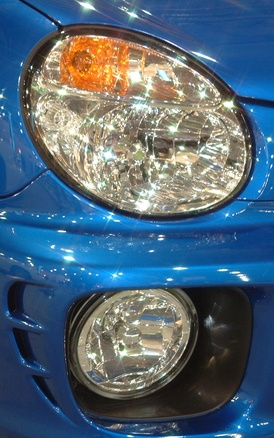
It's no stretch to say that Subaru's first generation (1992-2000) Impreza WRX played a dominant role in creating the import/compact car performance scene as we know it today. Like many budget racers derived from econo-car roots, the WRX was originally built in just high enough quantities to qualify it as a production car in World Rally Championship (WRC) racing. However, the WRX quickly gained traction as one of the most capable cars available for the money, soon becoming a vanguard for import performance in the United States.
Install a manual boost controller (MBC) valve. MBCs are by far the most effective upgrade out there, and can net you upward of 70 to 100 horsepower for 1/3 the price of an oil change--even less if you spend the $4 to build one yourself. An MBC is an adjustable valve that sits in the pressure-sensing line between the turbo outlet and the turbo waste gate. The MBC restricts boost pressure to the waste gate, which delays the waste gate opening and allows the turbo to spin faster and make more boost. Nothing beats an MBC for return on the dollar.
Install a new turbo downpipe (the pipe that connects the turbo's exhaust outlet to the catalytic converter). The MBC's Achilles' heel is that it raises peak horsepower by increasing turbo speed, but does nothing to help the turbo reach its maximum speed (spool up). This increases the WRX's boost lag, or time that it takes for the turbo to reach its peak boost. A new downpipe will reduce exhaust back-pressure right at the turbo, allowing it to spool up quicker and reach a higher maximum boost level.
Install a high-flowing cold-air intake with high-flow air filter and a catalytic converter back ("cat-back") exhaust system. The turbo needs a steady flow of cool air in order to reach its maximum boost potential, and needs an exhaust system capable of eliminating waste gases as quickly as possible. Don't buy the hype that only an $8,000 titanium exhaust will make power; the fact is that (past the catalytic converter) almost any 3-inch diameter tube and straight-through muffler will perform nearly the same as any other.